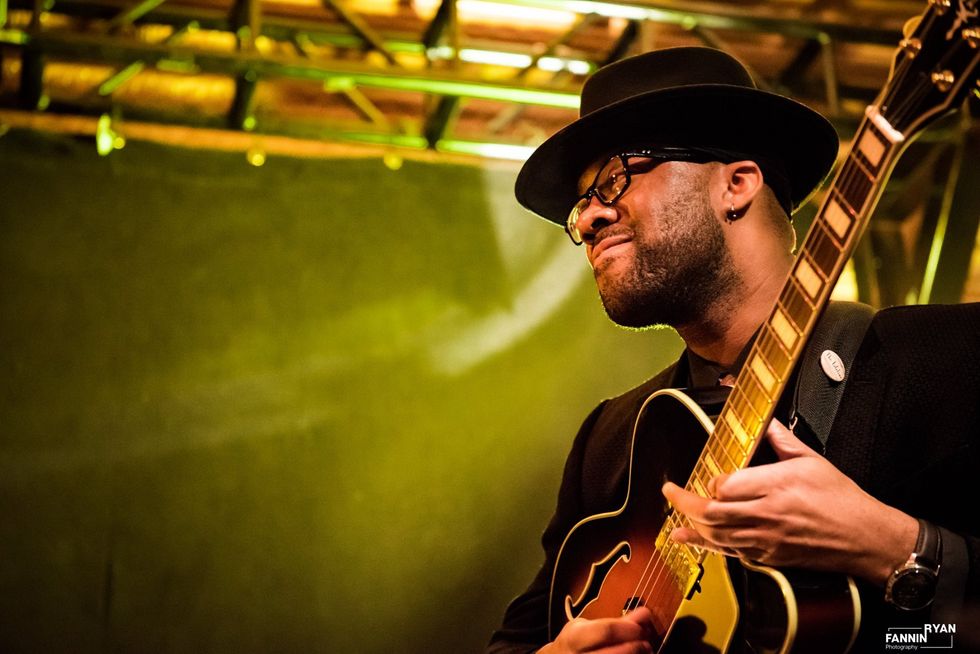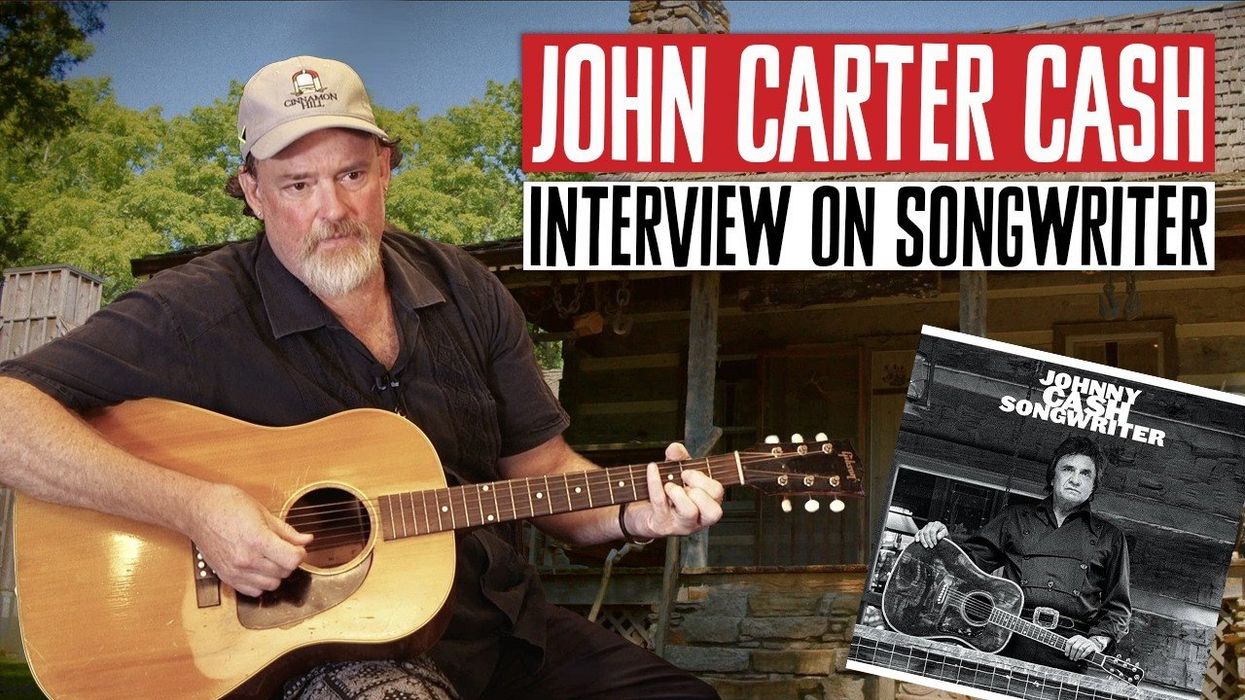
The durable but often maligned overdrive has thrived for more than 30 years. And not just on shredders’ pedalboards. Here’s why.
With over a million produced, the MT-2 Metal Zone is Boss’s second-most-popular overdrive ever—a significant accomplishment, considering Boss pedals have been ubiquitous for decades. I’ve got two Metal Zones. But, much like the late Rodney Dangerfield, the Metal Zone often “don’t get no respect.”
My first Metal Zone was simply abandoned at a guitar camp I taught at. Despite efforts to find its owner, it was never reclaimed. The second one was part of a package deal where the seller must have been getting rid of what he considered his undesirables: a Boss BF-2 with a faulty power-supply jack that only works with batteries, a Boss BCB-60 pedalboard with foam that stinks and is filled with irremovable allergens or something that always makes me itchy, and a perfect-condition Metal Zone—all for a mere 35 bucks.
But somehow, over the decades, the Metal Zone got a bad rap. The endless hordes of preteens that butchered “Crazy Train” through a Metal Zone at their local Guitar Center probably didn’t help. Even with a new Waza Craft edition in Boss’s lineup, things haven’t changed much. If you read an internet discussion of the Metal Zone, you’re guaranteed to find someone boldly commenting that it sounds like “buzzing bees.”
Likewise, if you search “Boss Metal Zone” on YouTube, the first thing that comes up is Ola Englund’s “Boss Metal Zone—Worst Distortion Pedal Ever?” video, which currently has over 3.5 million views. You’ll also see “What’s the Worst Pedal Ever? Boss Metal Zone Pedal, Demo” by Marty Schwartz, a famed YouTuber with over four million subscribers. And there are many more videos along the same lines. But if you dig deeper, you’ll find that despite those derisive, clickbait titles, many Metal Zone videos actually praise the little demon. And with good reason!“What immediately grabs my attention is its ridiculous sustain; for soloing, the pedal makes legato licks feel fluid and easy to play.”
When the Metal Zone first came out in 1991, it was literally the hottest piece of gear in the guitar world. It was the undisputed star of a stompbox shootout of 29 pedals in the October 1992 Guitar Player. The magazine’s editors proclaimed: “We knew the Metal Zone was a hot item when we couldn’t keep our test sample long enough to photograph it. The store we borrowed it from had sold it and was back-ordered 50 units.” The story was followed by comments like, “This thing starts off where others leave off,” “Mind-blowing. Never heard so much bass,” “Definitely a must-have,” and “Totally sick!” The shootout concluded with “The Boss Metal Zone easily grabbed top metal honors. Its absolutely fierce sounds make the $139.50 price tag [editor’s note: list price] seem like a deal.”
If you’ve used one before, you’ll likely agree—this silicon-driven, two-stage-clipping circuit is a really badass pedal! What immediately grabs my attention is its ridiculous sustain; for soloing, the pedal makes legato licks feel fluid and easy to play. For sharp and percussive metal rhythms, the Metal Zone also kills. With its massive bottom end, it has given me heavier sounds than I’ve gotten with more expensive pedals or high-gain amps.
The Metal Zone has more tone-shaping options than many other dirt pedals. There are six controls crammed into the space of four. In addition to the level and distortion knobs, the EQ dials are dual-function concentric—high and low, and mid freq and middle, which boosts or cuts the frequency you have the mid freq set to. Some players enjoy using the Metal Zone as a preamp, straight into the effects loop. Others put it between the guitar and amp. However you fire it up, if you invest time into fine-tuning the settings for your needs, you’ll be greatly rewarded.
If you’re a hard-rock or metal player, the Metal Zone is a no-brainer. Pro players like Biffy Clyro’s Simon Neil and Megadeth’s Dave Mustaine have used the Metal Zone. But it’s also surprisingly versatile—even Prince used one! Despite its name, it can convincingly get into mid-gain overdrive territory, and with the distortion knob around 9 o’clock, it’s pretty touch sensitive.
At only $99 new—$50 more for the Waza version—and, if you’re lucky, maybe $20 or so used, the Metal Zone is incredibly undervalued. I wouldn’t be surprised if the Metal Zone makes its way back to the top of the pedal pyramid some day. Guitar players are notoriously fickle and tend to be very impressionable. It just takes something as simple as one artist association and the tide can turn for any piece of gear. The Marshall ShredMaster became a cult classic simply because it was used by Jonny Greenwood of Radiohead. Maybe if John Mayer uses a Metal Zone the next time he covers “Panama,” it will again reign supreme.
- Reader Pedalboards 2023 ›
- Rig Rundown: God Is an Astronaut [2021] ›
- Boss Reissues the Metal Zone MT-2 and Super OverDrive SD-1 ›
The Man in Black returns with the unreleased Songwriter album. John Carter Cash tells us the story.
“The Man Comes Around” is a much-played song from the final album Johnny Cash recorded before his death in 2003, American IV: The Man Comes Around. Now, the Man in Black himself has come around again, as the voice and soul of an album he initially cut in 1993, titled Songwriter. It hits the street on June 28.
For fans who know Cash only through his much-loved American Recordings series, this is a very different artist—healthy, vital, his signature baritone booming, his acoustic playing lively, percussive, and focused. This is the muscular Johnny Cash heard on his career-defining recordings, from his early Sun Records sides like “Cry! Cry! Cry!” and “Folsom Prison Blues” to “Ring of Fire” and “Sunday Mornin’ Comin’ Down” to later, less familiar hits like “The Baron” and “That Old Wheel.” In short, classic Cash—the performer who became an international icon and remains one even 21 years after his death.
I recently visited the Cash Cabin recording studio—a log cabin on the Cash family property in Hendersonville, Tennessee, that was originally built as a sanctuary where Johnny wrote songs and poetry—with PG’s video team of Chris Kies and Perry Bean to talk about Songwriter with John Carter Cash, the son of Johnny and June Carter Cash.
In addition to getting the lowdown on Songwriter from John Carter Cash, he showed us some of the iconic guitars—including original Johnny Cash lead guitarist Luther Perkin’s 1953 Fender Esquire and a Martin that was favored by the Man himself—that dwell at the busy private studio. Check out this visit.
Guest picker Mei Semones joins reader Jin J X and PGstaff in delving into the backgrounds behind their picking styles.
Question: What picking style have you devoted yourself to the most, and why does it work for you?
Guest Picker - Mei Semones

Mei’s latest album, Kabutomushi.
A: The picking style I’ve practiced the most is alternate picking, but the picking style I usually end up using is economy picking. Alternate feels like a dependable way to achieve evenness when practicing scales and arpeggios, but when really playing, it doesn’t make sense to articulate every note in that way, and obviously it’s not always the fastest.
Obsession: My current music-related obsession is my guitar, my PRS McCarty 594 Hollowbody II. I think it will always be an obsession for me. It’s so comfortable and light, has a lovely, warm, dynamic tone, and helps me play faster and cleaner. This guitar feels like my best friend and soulmate.
Reader of the Month - Jin J X

Photo by Ryan Fannin
A: For decades, the Eric Johnson-style “hybrid picking” with a Jazz III for “pianistic” voicings. Great for electric, though not so much acoustic. I’ve been recently learning to use a flatpick, à la Brian Sutton, by driving the pick “into” the string at an angle—which makes me think of Pat Metheny and George Benson, without irony.
Obsession: I’m still focused on understanding the concepts of jazz, neo-classical, and beyond, though I’m also becoming obsessed with George Van Eps’ 7-string playing, flatpicking, hip-hop beats, the Hybrid Guitars Universal 6 guitar, and the secret life of the banjo.
Editorial Director - Ted Drozdowski

A: Decades ago, under the sway of Mississippi blues artists R.L. Burnside, Junior Kimbrough, and Jessie Mae Hemphill, I switched from plectrum to fingerstyle, developing my own non-traditional approach. It’s technically wrong, but watching R.L., in particular, freestyle, I learned there is no such thing as wrong if it works.
Obsession: Busting out of my songwriting patterns. With my band Coyote Motel, and earlier groups, I’ve always encouraged my talented bandmates to play what they want in context, but brought in complete, mapped-out songs. Now, I’m bringing in sketches and we’re jamming and hammering out the arrangements and melodies together. It takes more time, but feels rewarding and fun, and is opening new territory for me.
Managing Editor - Kate Koenig

A: I have always been drawn to fingerpicking on acoustic guitar, starting with classical music and prog-rock pieces (“Mood for a Day” by Steve Howe), and moving on to ’70s baroque-folk styles, basic Travis picking, and songs like “Back to the Old House” by the Smiths. I love the intricacy of those styles, and the challenge of learning to play different rhythms across different fingers at the same time. This is definitely influenced by my classical training on piano, which came before guitar.
Obsession: Writing and producing my fifth and sixth albums. My fifth album, Creature Comforts, was recorded over the past couple months, and features a bunch of songs I wrote in 2022 that I had previously sworn to never record or release. Turns out, upon revisiting, they’re not half bad! While that one’s being wrapped, I’m trying to get music written for my sixth, for which I already have four songs done. And yes, this is a flex. 💪😎
Guitarist, songwriter and bandleader Grace Bowers will independently release her highly anticipated debut album, Wine On Venus, August 9.
The new album adds to a breakout year for Bowers, who was recently selected as a U.S. Global Music Ambassador as part of the U.S Department of State and YouTube’s Global Music Diplomacy Initiative, is nominated for Instrumentalist of the Year at the 2024 Americana Music Association Honors & Awards and will make her debut performance on the legendary Grand Ole Opry on her eighteenth birthday, July 30, 2024. Other performances this year include shows supporting Slash, The Red Clay Strays and Brothers Osborne as well as stops at Levitate Music & Arts Festival, Floyd Fest, Bristol Rhythm & Roots Reunion, Bourbon & Beyond, XPoNential Music Festival and Pilgrimage Music & Cultural Festival. See below for complete tour itinerary.
Grace Bowers & The Hodge Podge - Tell Me Why U Do That (Official Video)
Produced by John Osborne (Brothers Osborne), Wine On Venus captures the electric energy of Bowers’ live performances with The Hodge Podge. The record consists of nine soul-infused tracks including a new version of Sly and the Family Stone’s “Dance to the Music” as well as previously release single, “Tell Me Why U Do That,” of which Forbes praises, “an infectious, joyous party and a worthy introduction to Bowers.” Additionally, The Bluegrass Situation declares, “an exceptional breakout talent who seems primed for a long career to come,” while RIFF Magazine calls her “The next generation’s star of American rock, blues and funk guitar.”
Of the record, Bowers shares, “I’m so excited to share my first album with the world in August! It’s been a long time coming, and I’m proud of what was created with the incredible Hodge Podge and John Osborne producing. We recorded everything live, as it should be, for this sonic journey. I hope you love it as much as I do.”
Additionally, of the title track, she reflects, “My nana was 100 years old when she passed away last year. She would always tell me that when she died, she would be drinking wine on Venus. She was a little eccentric but thought that was just something so cool. When she passed, I wrote a song about it.”
In addition to Bowers (guitar), the record features Joshua Blaylock (keys), Brandon Combs (drums), Eric Fortaleza (bass), Esther Okai-Tetteh (vocals) and Prince Parker (guitar) as well as songwriting collaborations with respected artists such as Ben Chapman, Meg McRee, Maggie Rose and Lucie Silvas.
Originally from the Bay Area and now calling Nashville home, Bowers began garnering attention after sharing videos of herself playing guitar on social media during the pandemic. In the years since, she’s been featured on “CBS Mornings” in a piece focused on a new wave of young female guitarists, performed alongside Dolly Parton as part of her Pet Gala special on CBS, joined Lainey Wilson as part of CBS’ New Year’s Eve Live celebration, performed as part of the “Men’s Final Four Tip-Off Tailgate Presented by Nissan” and been sought after by everyone from Devon Allman to Tyler Childers and Susan Tedeshi to Kingfish. Of her 2023 Newport Folk Festival debut, Rolling Stone declared, “Her 20-minute performance gave the distinct sense that everyone lucky enough to have attended was witnessing a star in the making,” while The Tennessean calls her “a 17 year old Blues guitar prodigy,” with a, “heart as big as her talent is vast.”
Most recently this summer, Bowers performed alongside Billy Idol at the Fired Up For Summer benefit concert and raised $30,000 for MusiCares and Voices for a Safer Tennesseewith her 2nd Annual “Grace Bowers & Friends: An Evening Supporting Love, Life & Music” benefit show. With the release of Wine On Venus (distributed by The Orchard), Bowers will further establish herself as one of music’s most intriguing new artists.
For more information, please visit gracebowers.com.
The new destination on Reverb will feature an always-changing collection of new and like-new music gear from top brands for at least 20% off retail prices.
“Outlet music gear is a fantastic value for music makers. Often, it’s brand new overstock or clearance music gear that retailers or brands are simply looking to clear out. Other times, it’s gear that’s been opened, used for a demo, or simply doesn’t have its original box, but is otherwise in like-new condition,” said Jim Tuerk, Reverb’s Director of Business Development. “With the launch of the Reverb Outlet, we’re making it easy to access your favorite brands for less.”
The Reverb Outlet will feature high-quality discounted music gear from Reverb’s community of authorized sellers, ranging from retailers like ProAudioStar and Alto Music to brands like Focusrite and Korg selling discounted items directly to music makers. All of the new and like-new music gear in The Reverb Outlet:
- Is at least 20% off retail prices—but often more
- Is sold by authorized retailers and brands
- Comes with free shipping, and
- Has a minimum 7-day return window.
“With economic pressures making it harder for music makers to invest in music gear, it’s more important than ever that the music-making community has access to affordable musical instruments. We launched the Reverb Outlet to make it easier for music makers to find the best deals on the instruments that will inspire them,” said Reverb CEO David Mandelbrot. “Now that players can shop discounted outlet music gear alongside our huge range of affordable used music gear, it’s easier than ever to find the perfect instrument for your budget.”
Visit the Reverb Outlet today and check back often, as new deals will be added regularly. Please note that as of now, this is available to those in the US only.
For more information, please visit reverb.com.



